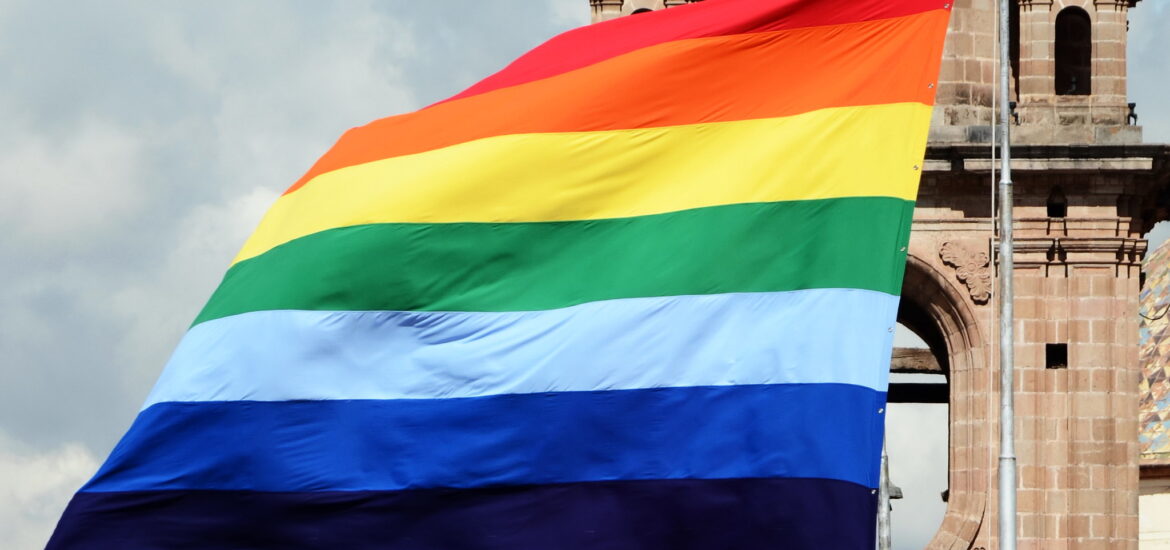When you visit Cusco, Peru, especially during the Inti Raymi festival in June, you’ll see a colorful flag flying from windows and balconies all over the city. You might think everyone in Cusco is supporting the LGBT+ movement.
It’s important to understand that although Cusco’s flag looks similar to the LGBT+ community flag, they have different meanings. The flag of Cusco has its own unique history, unrelated to the Inca Empire. In fact, the Inca Empire didn’t even have a flag.
Let’s dive into the Cusco flag’s fascinating history, and what sets it apart. By exploring its rich history and cultural heritage, we can discover what makes this city so special. Tourists in Cusco see a rainbow flag, especially in June during the Inti Raymi festival.
Tahuantinsuyo Flag and the Unancha
One of the reasons we have to affirm is that the Inca Empire never had a flag, it’s because the flag itself is a part of Spanish culture, so when Spaniards arrived in Peru they implemented many costumes and traditions, including the flag as a national identity banner.
The closest thing the Incas had as a flag was the “Unancha”, a sacred symbol that Inca armies did use royal banners for their leaders.
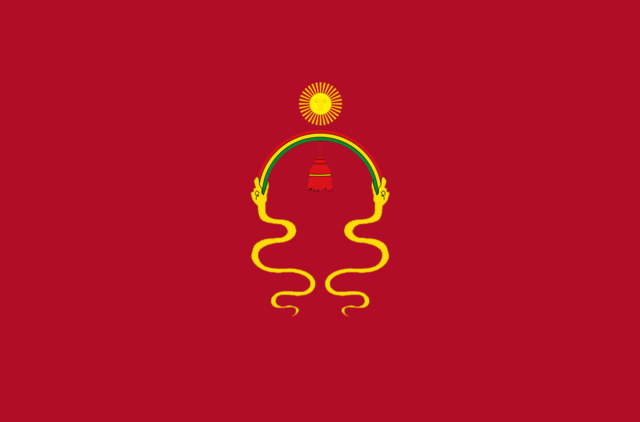
The Unancha was a small, square flag, around 10 or 12 palm lengths in size. People at that time made it from cotton or wool and mounted it on a tall, stiff pole, and did not flutter in the wind.
Each king painted his arms and symbols on it, and each one chose different symbols. The general Inca symbols were a blue arch and two parallel serpents along the edge, which served as a crown. Each king would add his own symbols, such as a lion and an eagle. The top of the banner was adorned with certain long red feathers placed at intervals.
Tahuantinsuyo Flag’s Origin
The question is still standing, how did this rainbow flag originate and become associated with Cusco? To answer that question we have to go back to 1948, when Tawantinsuyo Radio was founded in Cusco. In 1973, Radio Tahuantinsuyo marked its 25th anniversary.
The founder, Raúl Montesinos Espejo, then held a contest for the flag’s design. The winner drew inspiration from the Wiphala flag of Aymara cultures in Bolivia and Peru. Since then, the flag represented a radio station, however, people began to wrongly link this symbol to the historical Tahuantinsuyo.
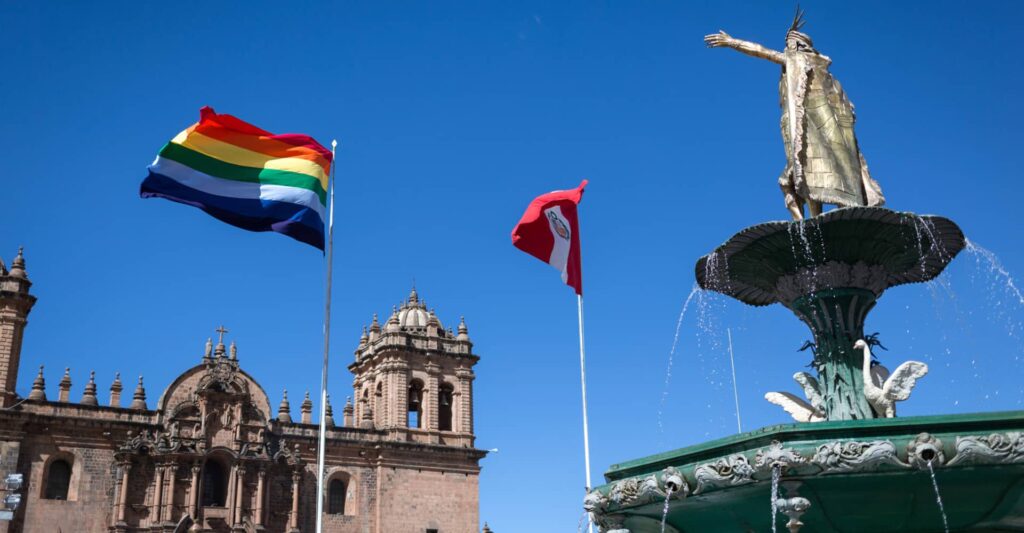
This design featured horizontal stripes in seven rainbow colors. CERVESUR, the owner of Cusqueña beer, funded the flag with S/. 500. Finally, authorities paraded the flag from the radio station on Avenida El Sol to the Plaza de Armas, where it was raised.
Five years later, on June 9, 1978, thanks to the municipality of Cusco, and Gilberto Muñiz Caparó, Cusco’s major at that time, people started to see it as “ Cusco’s official symbol, and it remains so today. However, there’s another question we have to bring up, where does the controversy arise?
LGBT Flag and Tahuantinsuyo’s differences
While this was happening in Cusco, Mr. Gilbert Baker designed the LGTBI+ flag in San Francisco, USA. The LGTBI+ flag was first flown on June 25, 1978, on the anniversary of the Pride Festival. So we have two dates: the Pride flag (June 25, 1978) and the Cusco flag (June 9, 1978).
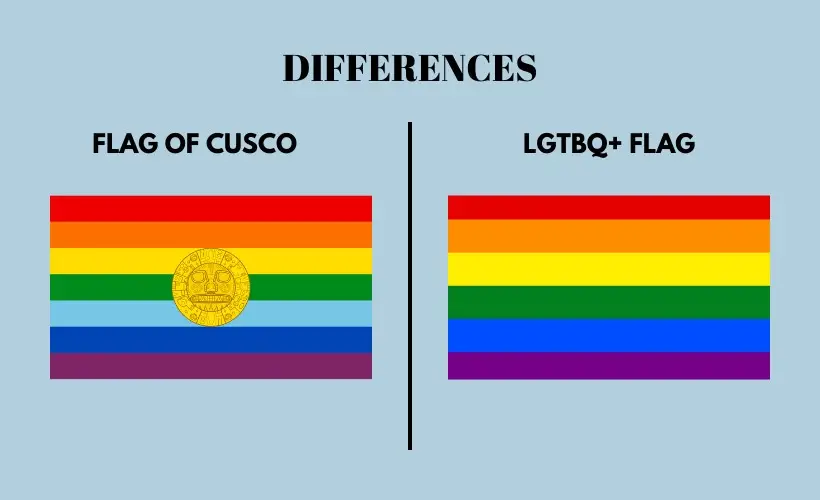
Therefore, the Cusco flag is older by a mere 16 days. What does this mean? Nothing, because no flag is a copy of another. It’s just a coincidence that they look similar. The main difference between the Cusco flag and the LGBT flag is that the Cusco flag has seven colors, including a light blue stripe.
The LGBT flag has six colors, less the light blue; essentially, the Cusco flag is a full rainbow with the added sky blue shade, making it distinct from the standard LGBT rainbow flag. So, although they could be the same at first glance, is it clear that both flags have differences.
Tahuantinsuyo Flag in the current day
Although this flag was created with good intentions, it does not identify the inca culture and ancestors. If we analyze it from the perspective of universal history, 35 years means absolutely nothing compared to the centuries that have passed since the time of the Inca Empire.
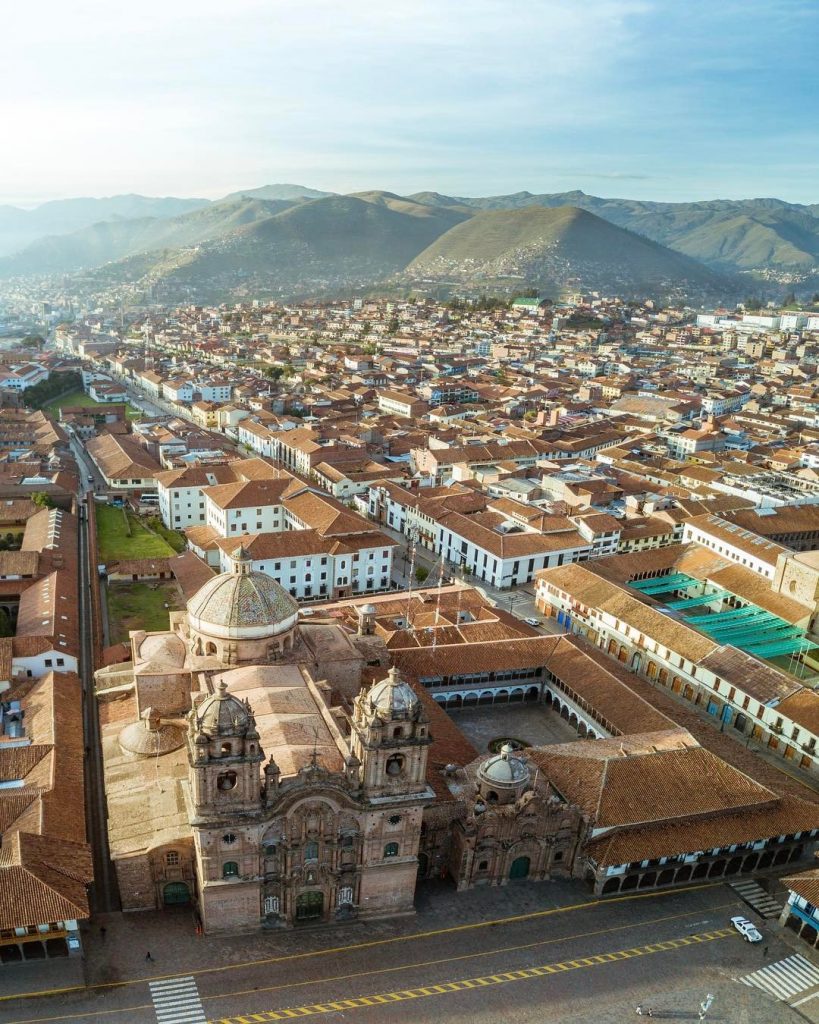
In 2007, the Cusco Municipality consulted local authorities and experts about changing the Cusco flag. The result was to promote this change, however, it has not been carried out. The current confusion shows that Cusco needs a symbol that truly represents an Inca motif that stands out from the confusion.
This new symbol needs to be more stuck to what the real Inca Empire once was, the greatest Empire in Latin America and one of the greatest in human history. To read similar content about Cusco, Peru, and more, stay tuned to our blog!
For your trip to Peru, you can trust Viagens Machu Picchu. Feel free to contact us, with no obligations, so you can learn more about our tours, packages, and special deals. Cusco and its cultural wonders are waiting for you to discover them all!
Viagens Machu Picchu, journeys that inspire, moments that last.

